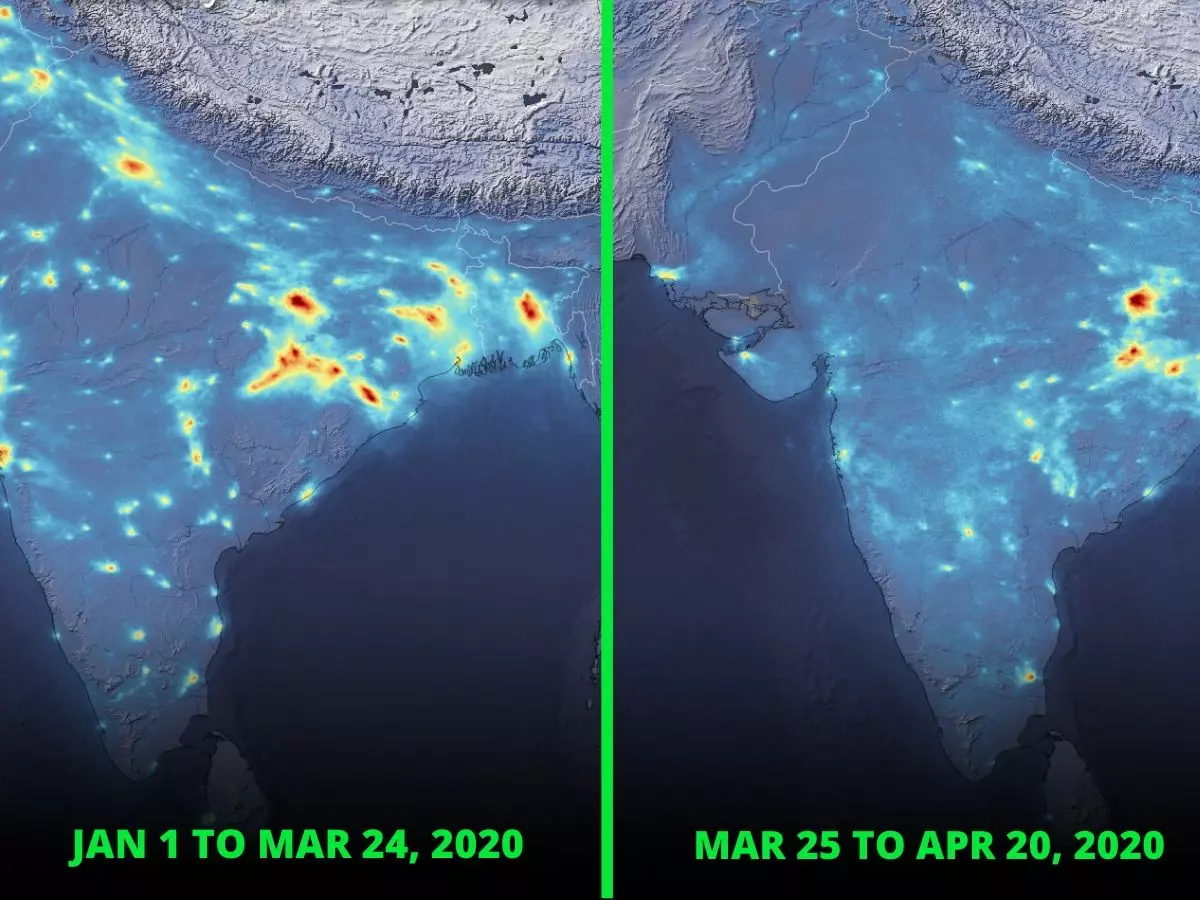India's Air Pollution Has Dropped 40-50 Percent Since Coronavirus Lockdown
Satellite maps produced using data from Copernicus Sentinel -5P satellite reveals a considerable drop in average nitrogen dioxide concentrations over India from 24th March 2020 to 20th April 2020.

We all are living in dread of COVID-19 and making lifestyle changes under the ongoing lockdown. Our lives have completely halted.
People are forced to work from home, kids aren¡¯t playing outside this summer and everything seems like it's out of our control.
 Reuters
Reuters
Don't Miss: Contribute To Indiatimes Fundraiser To Help India Fight COVID-19
However, amidst all this darkness, we have one silver lining -- our Earth is healing. And according to a recently captured images from Copernicus Sentinel-5P satellite, various cities across India have now seen a considerable drop in pollution.
Satellite maps produced using data from Copernicus Sentinel -5P satellite reveals a considerable drop in average nitrogen dioxide concentrations over India from 24th March 2020 to 20th April 2020.
The images reveal at least a 40 to 50 percent drop in pollution levels, compared to same time last year.
 ESA
ESA
According to Claus Zehner, ESA¡¯s Copernicus Sentinel-5P mission manager, "What is interesting in these new maps are the high values of nitrogen dioxide concentrations over northeast India. Our analysis shows that these clusters are directly linked with the locations of the ongoing coal-based power plants. The largest power station in India, the Vindhyachal Super Thermal Power Station, shows a reduction of only around 15% compared to the same time last year."
Nitrogen dioxide is normally released in the atmosphere from power plants, industries as well as vehicles -- causing several respiratory problems. However, since the shutdown, this is dropped drastically.
Another report by Reuters revealed a 9.2 percent drop in power consumption in march 2020. From data received by the Power System Operation Corporation Ltd. (POSOCO), the report revealed that in March 2020, people consumed 100.2 billion kilowatt-hours, whereas in March 2019, it was 110.33 billion kilowatt-hours.
Claus further added, "Weather variability is an important factor to consider when making assessments such as these, which is why our team has averaged the data over a longer period of time. In this case, we can clearly see the decreased concentrations are due to human activity."
